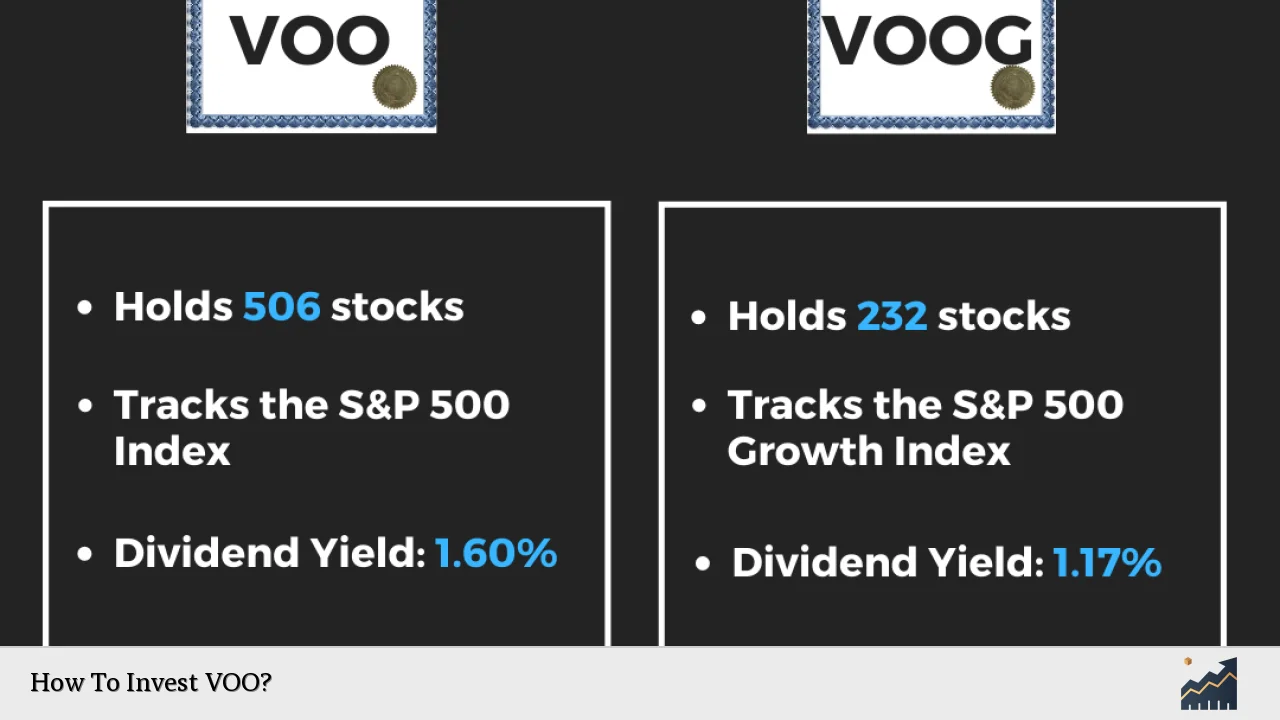Investing in the Vanguard S&P 500 ETF (VOO) is a popular choice for many individuals looking to gain exposure to the U.S. stock market. VOO tracks the performance of the S&P 500 index, which comprises 500 of the largest U.S. companies, making it an excellent option for investors seeking diversification and long-term growth. This guide will provide you with essential information on how to invest in VOO, including steps to get started, key considerations, and strategies for maximizing your investment.
| Feature | Description |
|---|---|
| Type | Exchange-Traded Fund (ETF) |
| Expense Ratio | 0.03% |
| Investment Strategy | Passive management tracking S&P 500 |
Understanding VOO
The Vanguard S&P 500 ETF (VOO) is designed to provide investors with exposure to the performance of the S&P 500 index. This index includes a diverse range of large-cap U.S. companies across various sectors, such as technology, healthcare, consumer goods, and financials. By investing in VOO, you effectively own a small piece of each of these companies, allowing for broad market exposure without needing to purchase individual stocks.
One of the most significant advantages of investing in VOO is its low expense ratio of just 0.03%. This means that for every $1,000 invested, only $0.30 goes toward management fees each year. This cost efficiency is a crucial factor for long-term investors, as lower fees can lead to higher net returns over time.
Moreover, VOO is a passively managed fund, meaning it aims to replicate the performance of the S&P 500 rather than trying to outperform it through active stock selection. This strategy reduces volatility and provides a more stable investment experience.
Getting Started with VOO
To invest in VOO, follow these straightforward steps:
1. Open a Brokerage Account: Choose a brokerage firm that offers access to ETFs like VOO. Popular options include Vanguard, Fidelity, Charles Schwab, and Robinhood.
2. Fund Your Account: After opening your account, deposit funds into it via bank transfer or other accepted methods.
3. Search for VOO: Once your account is funded, use the brokerage’s search function to find the Vanguard S&P 500 ETF by entering its ticker symbol “VOO”.
4. Place Your Order: Decide how many shares you want to buy and place your order. You can choose between a market order (buying at the current price) or a limit order (setting a specific price at which you’re willing to buy).
5. Consider Automatic Investments: For consistent growth, consider setting up automatic investments into VOO on a regular basis (e.g., monthly). This strategy is known as dollar-cost averaging and helps mitigate the impact of market volatility.
Investment Strategies for VOO
Investing in VOO can be approached through various strategies depending on your financial goals and risk tolerance:
- Long-Term Holding: Given its historical performance and low fees, many investors choose to buy and hold VOO for an extended period (10 years or more). This strategy allows you to ride out market fluctuations and benefit from compounding returns.
- Dollar-Cost Averaging: By investing a fixed amount regularly regardless of market conditions, you can reduce the risk associated with timing the market. This approach allows you to purchase more shares when prices are low and fewer shares when prices are high.
- Reinvesting Dividends: VOO pays dividends that can be reinvested to purchase additional shares automatically through a Dividend Reinvestment Plan (DRIP). This strategy can enhance your overall returns by leveraging compounding effects.
- Tax-Advantaged Accounts: Consider investing in VOO through tax-advantaged accounts like IRAs or Roth IRAs. These accounts allow your investments to grow tax-free or tax-deferred, maximizing your long-term wealth accumulation.
Key Considerations Before Investing in VOO
Before investing in VOO, it’s essential to evaluate several factors:
- Risk Tolerance: Understand your risk tolerance level before investing in any stock or ETF. While VOO offers diversification across large-cap stocks, it is still subject to market volatility.
- Investment Horizon: Determine your investment horizon; longer timeframes typically allow for greater risk-taking since you have time to recover from potential downturns.
- Market Conditions: Stay informed about current market conditions and economic indicators that could impact stock performance. However, remember that timing the market is often less effective than consistent investing over time.
- Diversification Needs: While VOO provides exposure to large-cap U.S. stocks, consider whether you need additional diversification across other asset classes or global markets for a balanced portfolio.
Benefits of Investing in VOO
Investing in VOO offers several compelling benefits:
- Diversification: By holding shares in 500 different companies across various sectors, investors can reduce individual stock risk while capturing overall market growth.
- Cost Efficiency: With an expense ratio of just 0.03%, VOO is one of the most cost-effective ways to gain exposure to the S&P 500 compared to actively managed funds.
- Liquidity: As an ETF, VOO trades on stock exchanges like individual stocks, allowing investors to buy and sell shares easily during market hours without significant price impacts.
- Historical Performance: Historically, the S&P 500 has provided solid returns over long periods despite short-term volatility. Investing in VOO aligns with this trend by offering exposure to this benchmark index.
FAQs About How To Invest VOO
- What is VOO?
VOO is an exchange-traded fund that tracks the performance of the S&P 500 index. - How do I buy shares of VOO?
You can buy shares through any brokerage account that offers access to ETFs. - What are the fees associated with investing in VOO?
VOO has an expense ratio of just 0.03%, making it one of the lowest-cost options available. - Is investing in VOO suitable for beginners?
Yes, due to its diversification and low fees, it is an excellent choice for beginner investors. - Can I reinvest dividends from VOO?
Yes, you can enroll in a Dividend Reinvestment Plan (DRIP) to automatically reinvest dividends.
Investing in VOO can be a strategic move for those looking to build wealth over time while minimizing risks associated with individual stock investments. By following these guidelines and considering your financial situation carefully, you can effectively incorporate this ETF into your investment portfolio for long-term growth potential.

